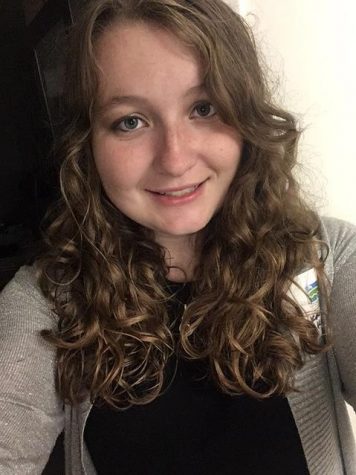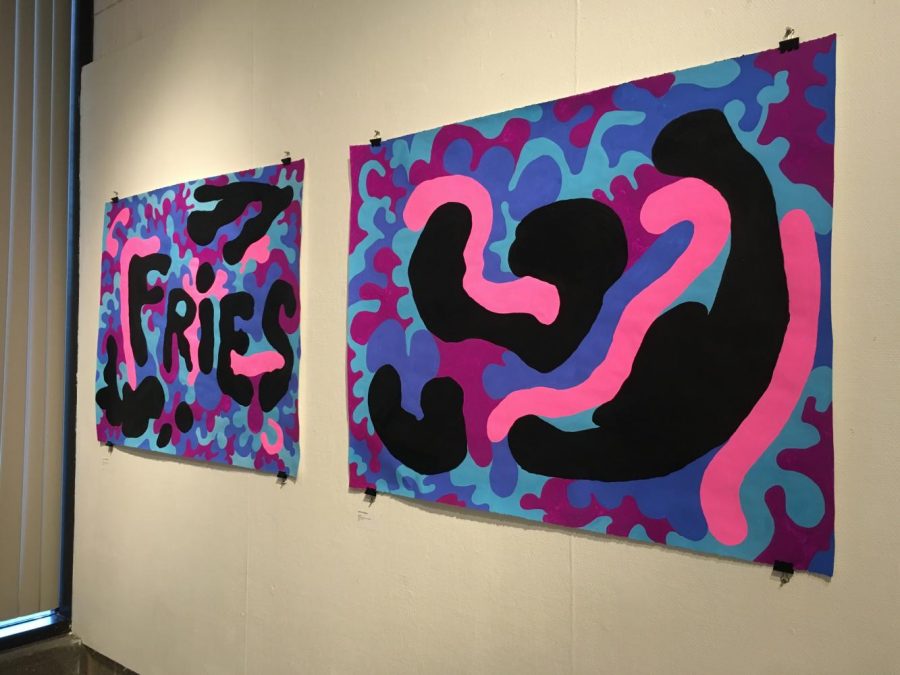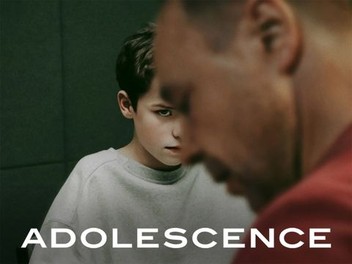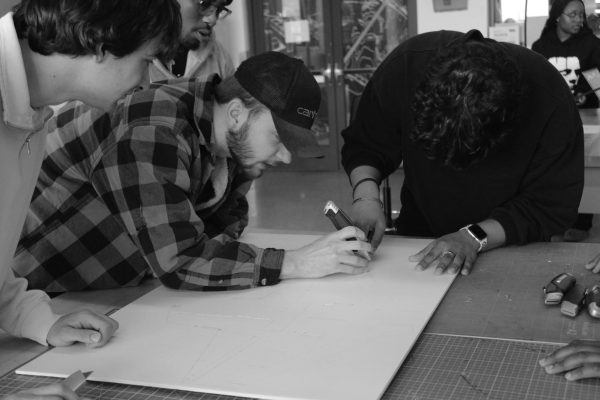Seton Gallery Features ‘At Work’
Wednesday (Oct. 4) the Seton Art Gallery featured faculty art pieces in an art show that allowed students to see what their professors have been working on.
The exhibit featured pieces from David Livingston, Jacquelyn Gleisner, Caroline Valites, Serdar Arat and Luis Victori. Students had the opportunity to walk through the gallery and get an idea of what their professors had been working on as well as a chance to interact with them to learn more about their art and creative thought process.
Some featured pieces were created using household items such as compact mirrors, hair ties and glass, representing personal stories. This was the case with the Ceiling Walk Series created by Valites. The series was largely inspired by the activities her and her brother would partake in when they were children that involved using a compact mirror to give the illusion that they were walking on the ceiling.
Other pieces utilized everything from acrylic paint to wood and copper to India ink and wool fabric. Gleisner had a featured painting which was a large wall piece that was formerly one long 30-foot scroll. As a scroll, it was installed outside of a building before it was taken down and altered. Gleisner explains that she cut it up and rearranged it into a square format to get the piece on display at the exhibit.
“The references come from textiles and then it was pieced together in a quilt-like fashion as well,” she said.
The colors on the piece, according to Glesiner, are “really bright” and “really supersaturated.” Glesiner had no game plan when she first began picking the colors.
“It has this psychedelic feel to it, the patterns are really repetitive and the line work is really repetitive,” she said.
The piece took her a couple of weeks to finish, as she worked on one section at a time, not unveiling the final product until the entire scroll was finished.
Livingston had two pieces featured in the exhibit, with similar attributes. One was a painting created using India ink on paper and one was a soft sculpture created from miscellaneous fabric all sewed together.
“There’s a long history of making these soft sculptures,” said Livingston.
His pieces were intentionally abstract and vague, allowing the audience to assign their own meaning to his work. He explained that he looks for meaning in his pieces and became frustrated that he could not come up with a concrete meaning to convey. Eventually he had a breakthrough.
“Since I’m so obsessed with them having a meaning and being able to convey a meaning I just decided that they had a meaning and used them in a situation where they have to have a meaning,” he said.
He began using his abstract pieces as protest signs and eventually in mock political campaigns.
“I thought ‘no I could be a politician and use an ink blob as a slogan for a campaign but have it not mean anything,’” he said.
As he developed this idea he explains that he was reading about the idea of the collective unconsciousness and began to think about how advertising in politics attempts to access our unconscious minds to get at the societal ideas that are embedded in our minds.
His ink blobs became outlets for people to project their feelings and thoughts onto. He described them as open-ended Rorschach tests which he used to create a campaign that could be whatever people brought to it. He would incorporate individual’s responses to his paintings into 20 minute political stump speeches, and eventually into his future art.
“Someone wrote cheese fries so I had to put that in my speech,” he said. “It resonated and became a big part of the speech.”
Eventually, this led to the incorporation of text into his abstract pieces.

Karina Krul is a senior marine biology major with a triple minor in psychology, political science and marine affairs. This is her fourth year with The...












